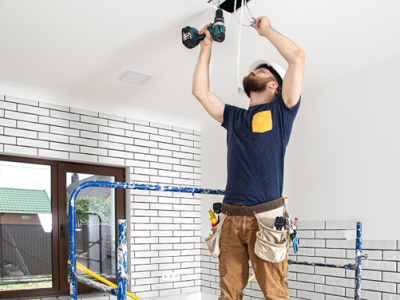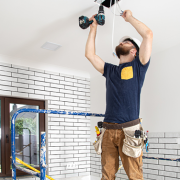Fiberglass shingles are a popular roofing material known for their durability, fire resistance, and affordability. Unlike traditional asphalt shingles that use organic mats as their base, fiberglass shingles have a fiberglass mat coated with asphalt and granules. This composition makes them lighter, less prone to moisture damage, and generally longer-lasting. Knowing whether your roof shingles contain fiberglass is essential for proper maintenance and estimating the roof’s lifespan, which typically ranges from 20 to 30 years under normal conditions. The question would be, is there fiberglass in shingles? Let us look at the answer.
Visual Clues: How to Identify Fiberglass Shingles
One of the easiest ways to identify fiberglass shingles is through their appearance and texture. Fiberglass shingles tend to be thinner and lighter compared to organic asphalt shingles. When looking at the edges of a shingle, fiberglass versions are more rigid and have a glassy, fibrous feel if you gently lift a corner. The granules on the surface are embedded more uniformly, giving the shingles a more consistent look. If you notice these characteristics from the ground or with a safe ladder inspection, it’s a good indication your shingles are fiberglass-based.
Check the Manufacturer’s Information and Documentation
If you have access to your home’s original building documents or roofing contractor’s invoice, check for specifics on the shingle type. Most manufacturers clearly label fiberglass shingles as such. Common brands like GAF, CertainTeed, and Owens Corning produce fiberglass shingles, so seeing any of these names on your paperwork alongside “fiberglass” or “fiberglass mat” confirms your roof’s composition. If documents are unavailable, some manufacturers print small codes or logos on the back of shingles that can be researched online for verification.
Lifespan and Maintenance Considerations for Fiberglass Shingles
Fiberglass shingles are known for their resistance to fire, mold, and moisture damage, which generally leads to a longer lifespan than organic shingles. However, they still require regular maintenance to maximize durability. Homeowners should inspect for missing granules, curling edges, or cracks after storms, as these can indicate wear or damage. Cleaning debris from the roof and gutters and ensuring proper attic ventilation helps prevent premature aging. Knowing your shingles are fiberglass means you can plan maintenance accordingly, often expecting 20–30 years of reliable performance.
When to Call a Professional for a Detailed Inspection
While a basic visual inspection can offer clues, the most reliable way to confirm whether your roof shingles contain fiberglass is through a professional roofing inspection. Roofers have the tools and expertise to safely examine shingles, check their layers, and assess overall roof health. If you’re unsure or notice signs of damage like granule loss, leaks, or buckling, scheduling a professional assessment can provide clarity and guide necessary repairs. Understanding your roof’s material type helps inform decisions about maintenance, repairs, or replacement, ensuring your home stays protected.
Identifying fiberglass shingles is a practical step for homeowners aiming to care for their roofs effectively. By recognizing visual signs, checking documentation, and understanding maintenance needs, you can prolong your roof’s lifespan and protect your investment. When in doubt, professional inspections offer peace of mind and expert guidance tailored to your roofing system.













Comments